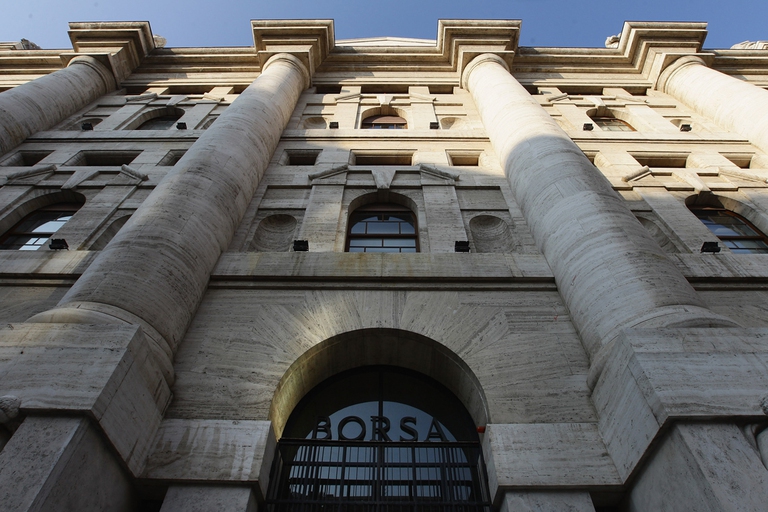
At the dawn of a new era, women in Japan still face old challenges: they’re paid less than men and struggle to scale the professional ladder. How can the impasse be broken?
In the next few months LifeGate will host a series of in-depth analyses on philanthropy and impact investing. This section is supported by Investing for Global Impact, a global research published by The Financial Times in partnership with GIST (Global Impact Solutions Today) and with the support of Barclays. Why philanthropy and impact investing, together In
In the next few months LifeGate will host a series of in-depth analyses on philanthropy and impact investing. This section is supported by Investing for Global Impact, a global research published by The Financial Times in partnership with GIST (Global Impact Solutions Today) and with the support of Barclays.
In order to understand the dynamics contributing to the development of a better, inclusive and sustainable world, which is also able to grant a dignified future for all and protect our Planet, a holistic and systemic vision is needed. A vision that has different – or even contradictory – points of view, modus operandi, and needs. A dialogue that sheds light on the connections and dynamics (both positive and negative) between all the stakeholders and parties involved: countries, municipalities, small companies, multinationals, non-profits, and organisations of the civil society at all levels, from grassroots movements to the United Nations.
In a holistic and systemic vision there isn’t room for isolated phenomena and all relationships and connections have to be traced and considered. Nature and the economy, as well as private and public property, are inseparable. Whose is the air above us? What about the clouds, the stars? Who does have the responsibility of holding everything together, while keeping a balance (even if dynamic)? Who must and can contribute to shaping a better future? In our view, everybody. From institutions, individuals, social organisations, and citizens.
«Investing for global impact» #Iimpact2 @Paris #YourVoice pic.twitter.com/jTUudTCmlZ
— YourVoiceRH (@YourVoiceRH) 30 marzo 2017
We have a holistic and inclusive point of view. This is why we’ll talk about philanthropy and impact investing, as well as about the new forms of collaborations between traditional companies and public institutions and the new innovative forms of influence between these actors. We’ll also talk about social investments, the assessment of their positive impacts on the Planet, new perspectives and new paradigms. To us “investing” means using one’s money while generating interactions and having an impact on the economy, the environment, nature, and people.
This while trying to highlight the new paths taken to realise what has seemed impossible so far: contributing to a better world and, meanwhile, generate profits. These new paths require overcoming the standards underlying our traditional social and economic system, such as the contrast between profit and philanthropy, development and sustainability, hospitality and protectionism. The age of dichotomies has come to an end; the age of circularity has just started.
All the contents aggregated in the tag Investing for Global Impact aim to help shed a light on all this, creating a clear and extensive dialogue. A dialogue that, without overlooking Italy, closely follow what happens in other countries across our globalised and interconnected world. A dialogue that focuses on individual responsibility, i.e. everything we can do in our private and working life, keeping in mind that each and every of us play different roles, which can be still identified in a single person.
Our aim is invoving a growing number of people in contemplating philanthropy and impact investing, as well as social companies and foundations, and their role in the creation of a better world. Together, with everybody’s contribution.
Siamo anche su WhatsApp. Segui il canale ufficiale LifeGate per restare aggiornata, aggiornato sulle ultime notizie e sulle nostre attività.
![]()
Quest'opera è distribuita con Licenza Creative Commons Attribuzione - Non commerciale - Non opere derivate 4.0 Internazionale.
At the dawn of a new era, women in Japan still face old challenges: they’re paid less than men and struggle to scale the professional ladder. How can the impasse be broken?
Inequality has increased anywhere in the world despite substantial geographical differences, with the richest 1% twice as wealthy as the poorest 50%. The results of the World Inequality Report 2018.
We talk to Samir de Chadarevian, an expert in sustainable development, philanthropy, impact investing and social innovation.
The global gender gap or index has widened, the 2017 World Economic Forum report shows. In view of the International Day for the Elimination of Violence against Women, we analyse how these phenomena are sadly related.
We can learn a lot from philanthropists and families investing their money for the future of all of us. We talk about this with Gamil de Chadarevian, founder of GIST Initiatives.
How do wealthy families invest their capital? Fortunately, impact investing is an increasingly common choice. An anticipation of some of the most important findings.
All companies aim to profit, but some of them are doing something for the society. They’re called benefit corporations.
More and more wealthy families care about our Planet. Data emerged from the Investing for Global Impact prove this.
The Bakken or Dakota Access Pipeline (DAPL), an underground oil pipeline project in the United States, is owned by a network of oil and pipeline companies, joint ventures and holding companies. After Trump revived it in January without the consent of the Sioux indigenous tribe affected by it and flouting environmental laws, many investors both from the US








